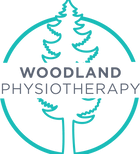Urinary Incontinence is characterized by difficulty or inability to control the flow of urine. There are several types of incontinence including:
- stress incontinence: leakage or loss of bladder control during activities like sneezing, coughing, lifting, or jumping.
- urge incontinence: sudden strong sensation of the need to urinate. Often referred to as an overactive bladder and may sometimes result in voiding a large or a small amount of urine, sometimes leakage can occur.
- mixed incontinence: a combination of both stress and urge incontinence symptoms.
- overflow incontinence: frequent dribbling of urine that occurs when there is not complete emptying of the bladder.


